GUEST BLOGGER M. O. YUKSEL
If you’re looking for a hands-on Earth science lesson that helps students understand the seasons, while connecting STEM and literacy, here’s an easy classroom activity that invites students to model Earth’s tilt, just like 15th-century astronomer Ulugh Beg did when he measured the Sun’s angles to understand the changing seasons.
Objective
Students model how Earth’s tilted axis causes the changing seasons.
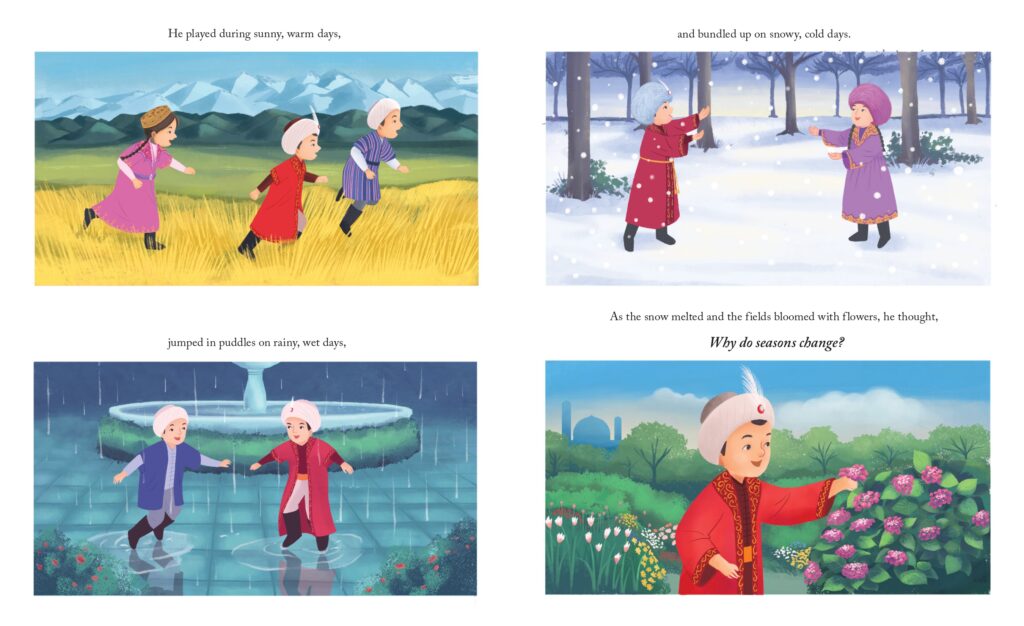
Materials
- A lamp (the Sun)
- A globe or ball
- A straw or pencil (to represent an observer or “gnomon”)
- Markers and tape
- A protractor (optional)
- A darkened room
Vocabulary
Axis, tilt, orbit, rotation, astrolabe, sextant, astronomy, observatory, revolution, solstice, equinox, inquiry
Engage
Read The Prince of Stars by me, illustrated by Zelma Firdauzia. Discuss who Ulugh Beg was and how he measured Earth’s axial tilt to explain why seasons change. What instruments did he use? Find Ulugh Beg’s observatory on a map or globe. (Hint: it’s in Samarkand, Uzbekistan.)
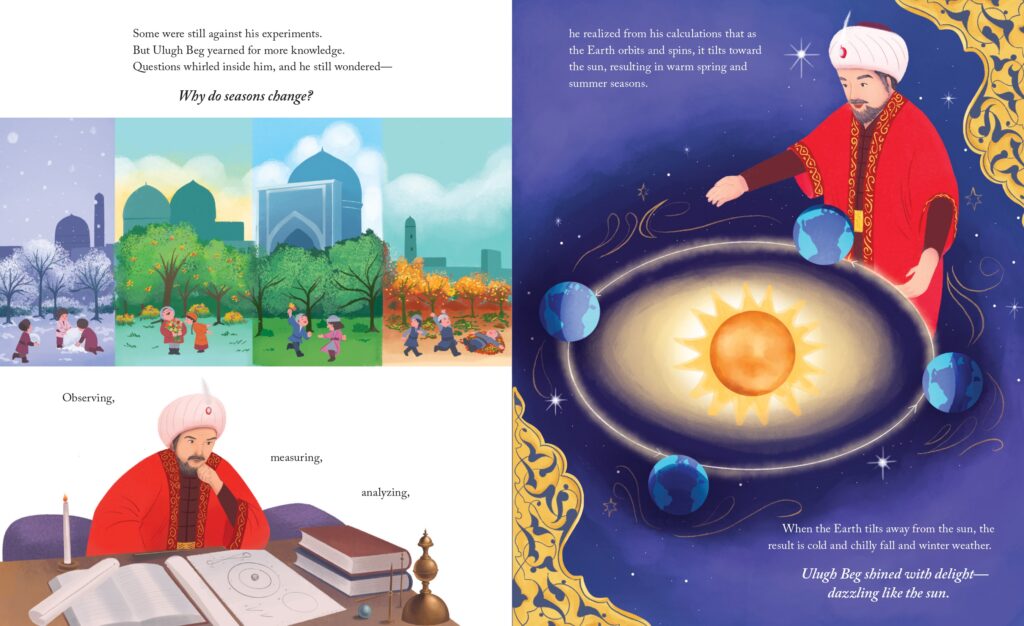
Explore: Modeling Earth’s Tilt
Step 1: Set the Stage
Place a lamp in the center of a table — this is the Sun. The globe or ball will orbit around it. Optional: assign roles — one student orbits the globe, another records data, and another reads observations aloud.
Step 2: Add the Tilt
Tilt your globe about 23.5° — the same tilt Ulugh Beg measured. Keep that tilt pointing the same direction as you “orbit” around the lamp.
Step 3: Observe the Seasons
Stop at four points in the orbit:
- When your hemisphere tilts toward the lamp (summer)
- When it tilts away (winter)
- Twice in between (spring and fall equinoxes)
Ask students:
- Is the light more direct or more spread out?
- How does that affect temperature and daylight hours?
Step 4: Measure Shadows
Place a straw or pencil upright on your globe. Shine the lamp and observe the shadow. Which position gives the shortest shadow? The longest?
Step 5: Discuss
- Why do we have longer days in summer?
- Why does the Sun look higher in the sky in summer than in winter?
- What would happen if Earth weren’t tilted at all?
STEM + Literacy Connections
After the activity, invite students to write or draw their reflections:
- Describe what happened to the light and shadows as the globe moved.
- Explain why the tilt causes the seasons.
- Imagine Ulugh Beg and his team of astronomers recording the Sun’s angle every day. Ask: What might have made their work challenging? For example
- Weather: Clouds or fog could block the Sun.
- Tools: No modern clocks, telescopes, or computers — just careful measurements by hand.
- Communication: Keeping detailed notes and calculations by hand — and comparing them with teammates across a large observatory.
- Timing: Observations had to happen at the same time every day, all year long.
Encourage students to use key terms such as axis, rotation, revolution, tilt, solstice, and equinox in their writing.
Extensions
- Graph It: Chart shadow length (or light intensity) versus position to show seasonal patterns.
- Art Meets Science: Decorate your model with Islamic geometric patterns inspired by Samarkand’s architecture.
- Research Link: Compare Ulugh Beg’s measurement of Earth’s tilt to modern NASA data. How close was he?
- Creative Writing: Write a journal entry from the point of view of a 15th-century astronomer watching the Sun rise and fall across the year.
By modeling Earth’s tilt, students experience the same patterns Ulugh Beg studied centuries ago. It’s a beautiful mix of curiosity, geometry, and storytelling and a reminder that science, like the stars, connects us all.
There are so many ways to connect STEM with The Prince of Stars: Ulugh Beg’s Quest to Map the Stars and Seasons, like learning about our solar system, the seasons, Islamic geometric patterns, and the scientific method of inquiry, some of which you’ll find in the activity guide on my website.
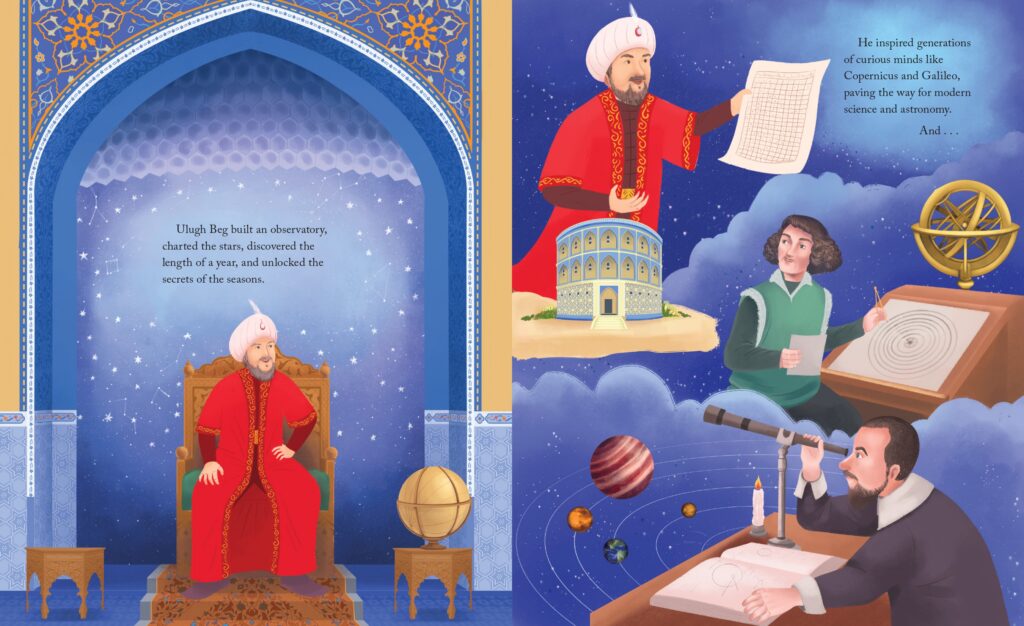
Featured image credit: “Statue of Ulugh Beg – father of scientific learning – in Samarkand” by Arthur Chapman is licensed under CC BY-NC-SA 2.0.
M.O. Yuksel is a starry-eyed storyteller who loves history and science. She’s passionate about researching, writing, and sharing the journeys of remarkable visionaries who dared to explore the mysteries and wonders of our universe. Over the years, she has visited Ulugh Beg’s observatory in Samarkand, Uzbekistan, several times, and she’s always wanted to share the story of this extraordinary scientist with readers of all ages.
She’s the award-winning author of several books, including IN MY MOSQUE, ONE WISH: Fatima al-Fihri & the World’s Oldest University, RAMADAN KAREEM, and SAMI’S SPECIAL GIFT: An Eid Al-Adha Story. Find her online at: www.moyuksel.com.


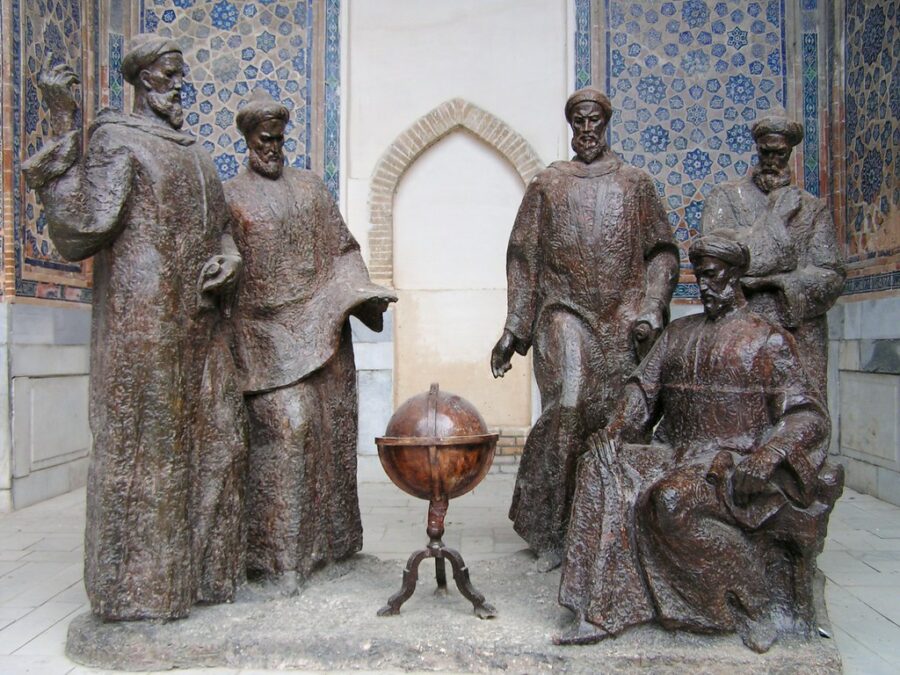

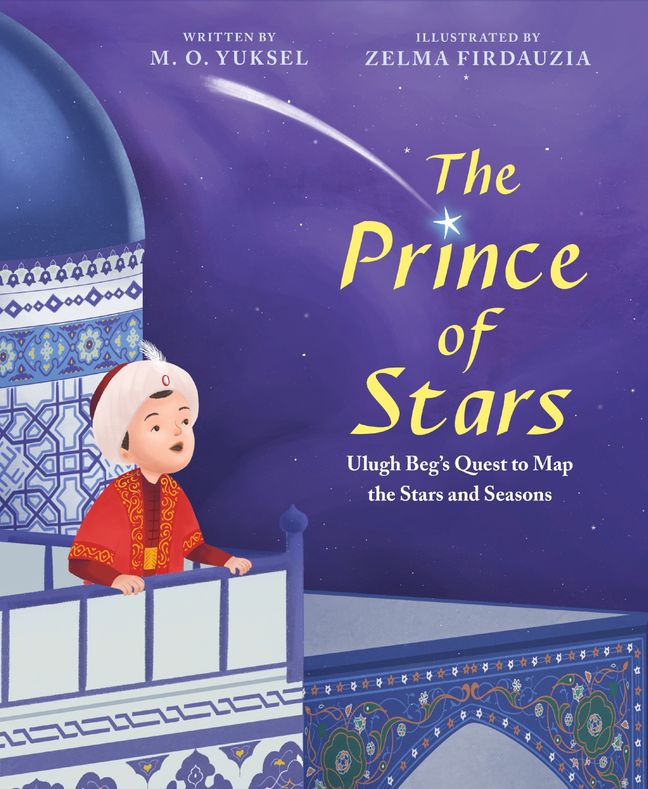






Leave a Reply
Your email is safe with me.